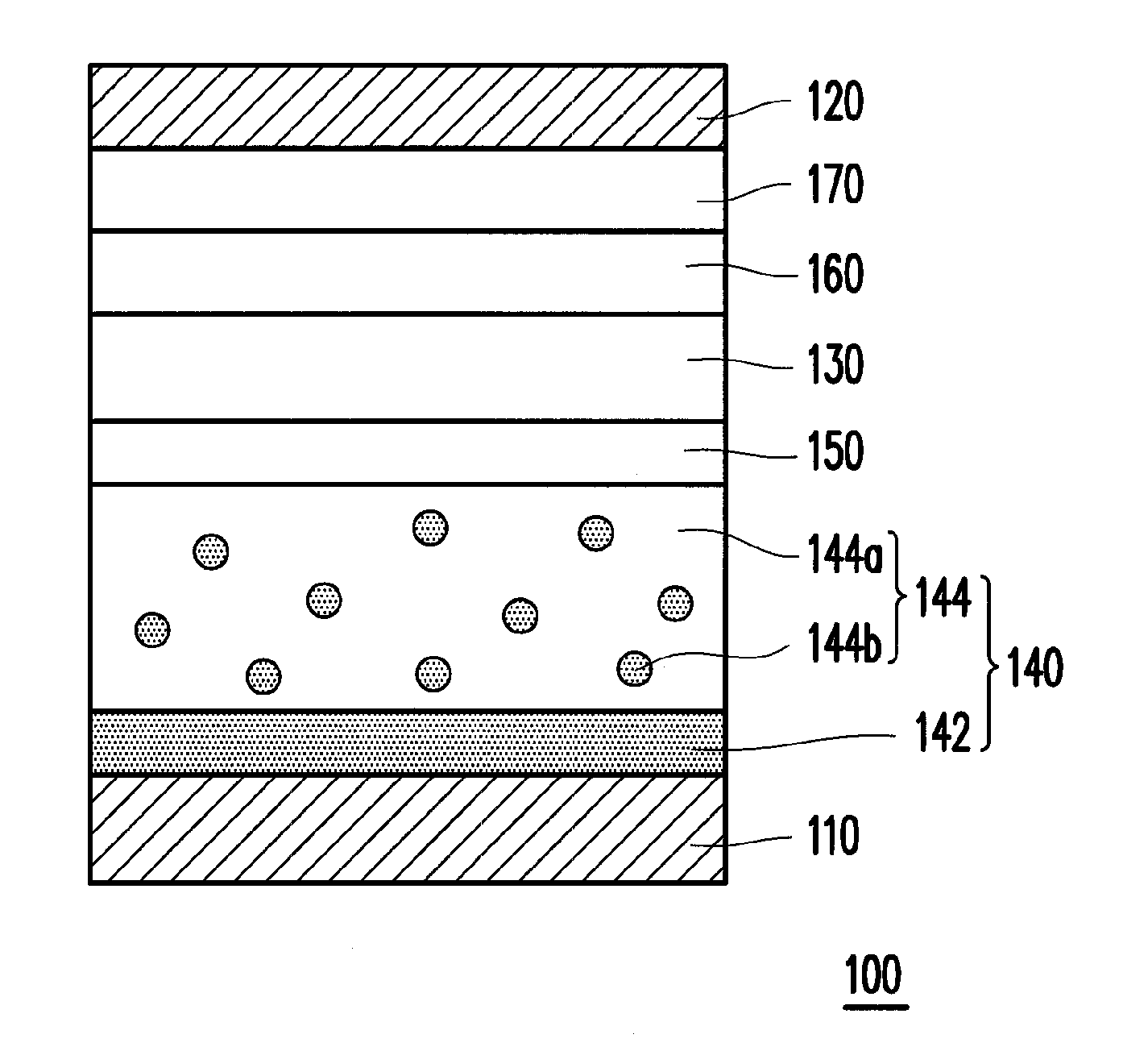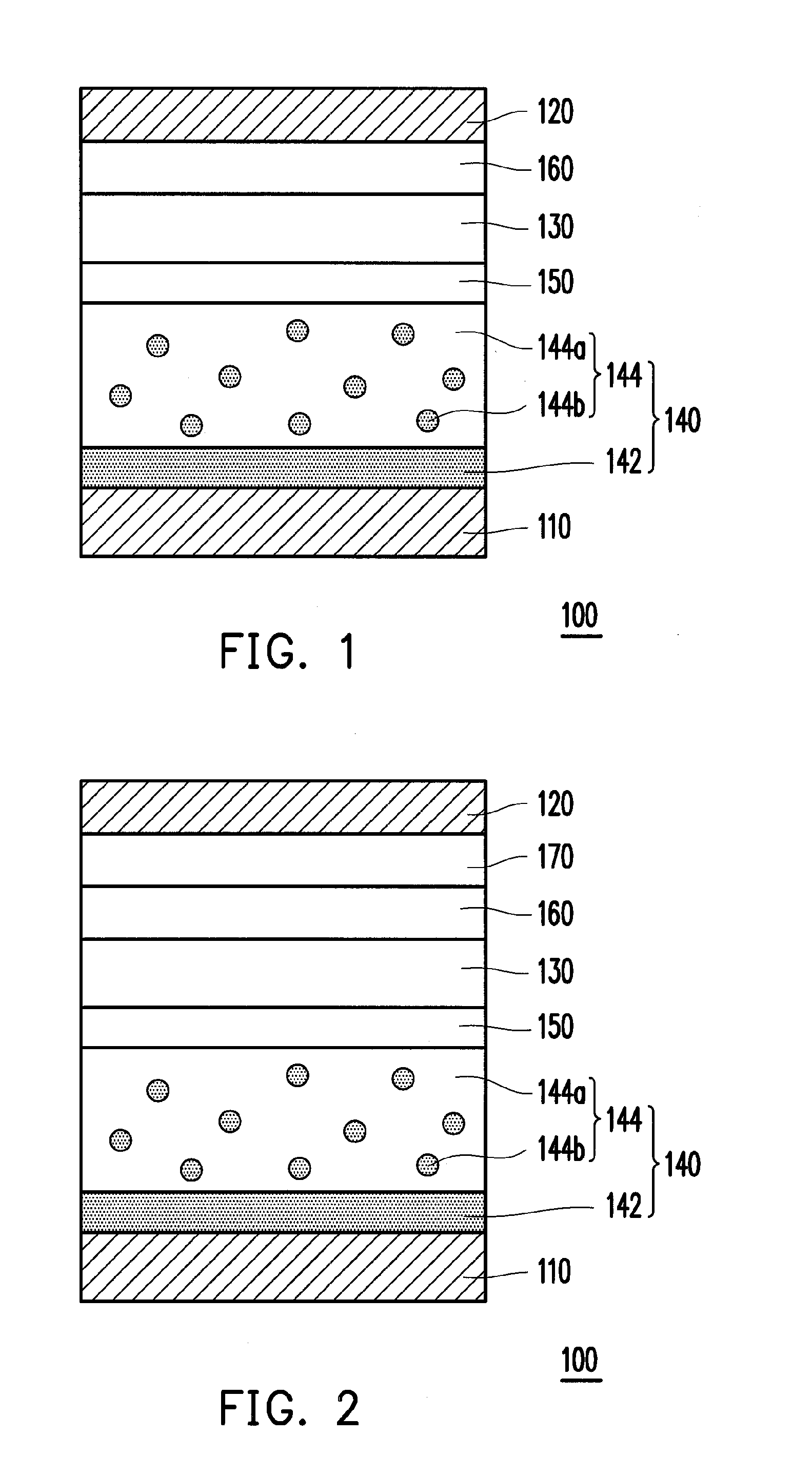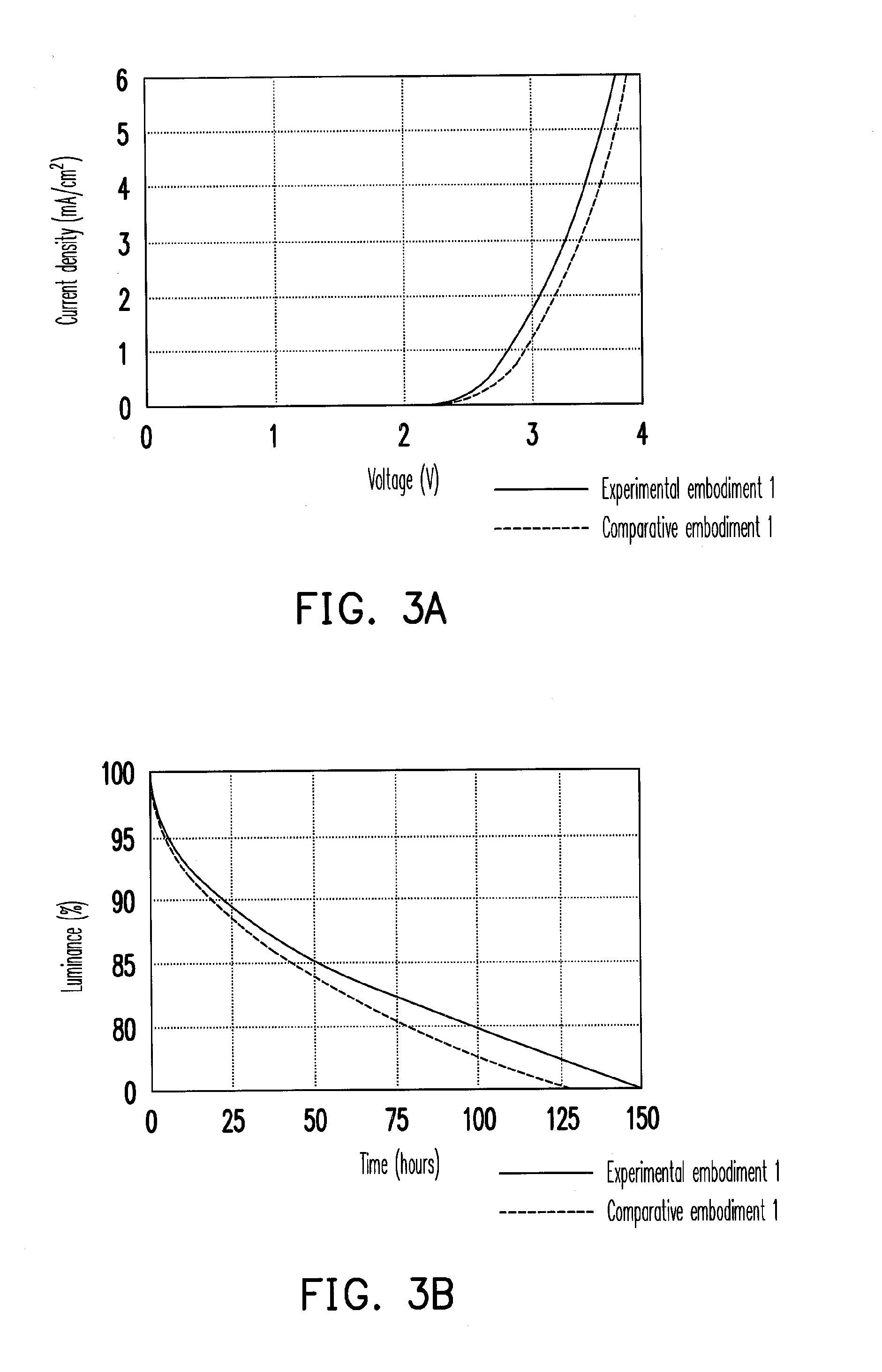Organic electroluminescent device
a technology of electroluminescent devices and electroluminescent devices, which is applied in the direction of thermoelectric device junction materials, semiconductor devices, electrical apparatus, etc., can solve the problems of inferior hole injection efficiency of electroluminescent devices, short lifetime, and inferior thermal stability, so as to improve light emission efficiency, reduce driving voltage, and prolong life
- Summary
- Abstract
- Description
- Claims
- Application Information
AI Technical Summary
Benefits of technology
Problems solved by technology
Method used
Image
Examples
experimental embodiment 1
[0041]In order to verify that the organic electroluminescent device according to the above embodiments has better device characteristics and a longer lifetime, experimental embodiment 1 is compared with comparative embodiment 1. The organic electroluminescent device according to experimental embodiment 1 has a structure as shown in FIG. 1, wherein the material of the first material layer and the doping material of the second material layer are the above-mentioned HAT-CN, a thickness of the first material layer is 30 nm, and a doping concentration and a thickness of the second material layer are respectively 1.5% and 150 nm. The organic electroluminescent device according to comparative embodiment 1 has a structure as shown in FIG. 1, wherein the material of the first material layer is HAT-CN, a thickness of the first material layer is 30 nm, the doping material of the second material layer includes tetrafluoro-tetracyano-quinodimethane (F4-TCNQ), and the doping concentration and the...
experimental embodiment 2
[0043]The purpose of experimental embodiment 2 is to further verify the fact that the structure of the hole injection layer which includes the first material layer and the second material according to the disclosure enhances the light emitting efficiency of the organic electroluminescent device, compared with a convention hole injection layer formed by a single doping layer. Experimental embodiment 1 and comparative embodiment 2 are used for comparison. The organic electroluminescent device according to experimental embodiment 1 has the structure as shown in FIG. 1, wherein the material of the first material layer and the doping material of the second material layer are HAT-CN. A structure of an organic electroluminescent device according to comparative embodiment 2 is similar to the structure shown in FIG. 1, but the organic electroluminescent device according to comparative embodiment 2 has a conventional structure which includes a first electrode layer, a hole injection layer whi...
PUM
 Login to View More
Login to View More Abstract
Description
Claims
Application Information
 Login to View More
Login to View More - R&D
- Intellectual Property
- Life Sciences
- Materials
- Tech Scout
- Unparalleled Data Quality
- Higher Quality Content
- 60% Fewer Hallucinations
Browse by: Latest US Patents, China's latest patents, Technical Efficacy Thesaurus, Application Domain, Technology Topic, Popular Technical Reports.
© 2025 PatSnap. All rights reserved.Legal|Privacy policy|Modern Slavery Act Transparency Statement|Sitemap|About US| Contact US: help@patsnap.com



